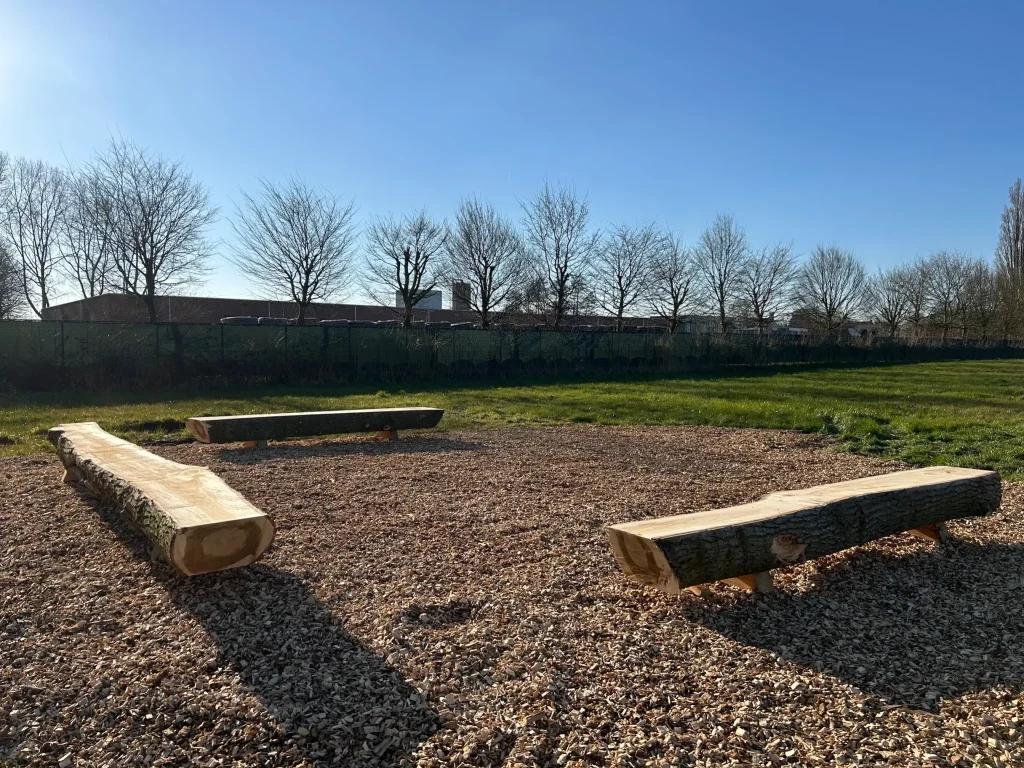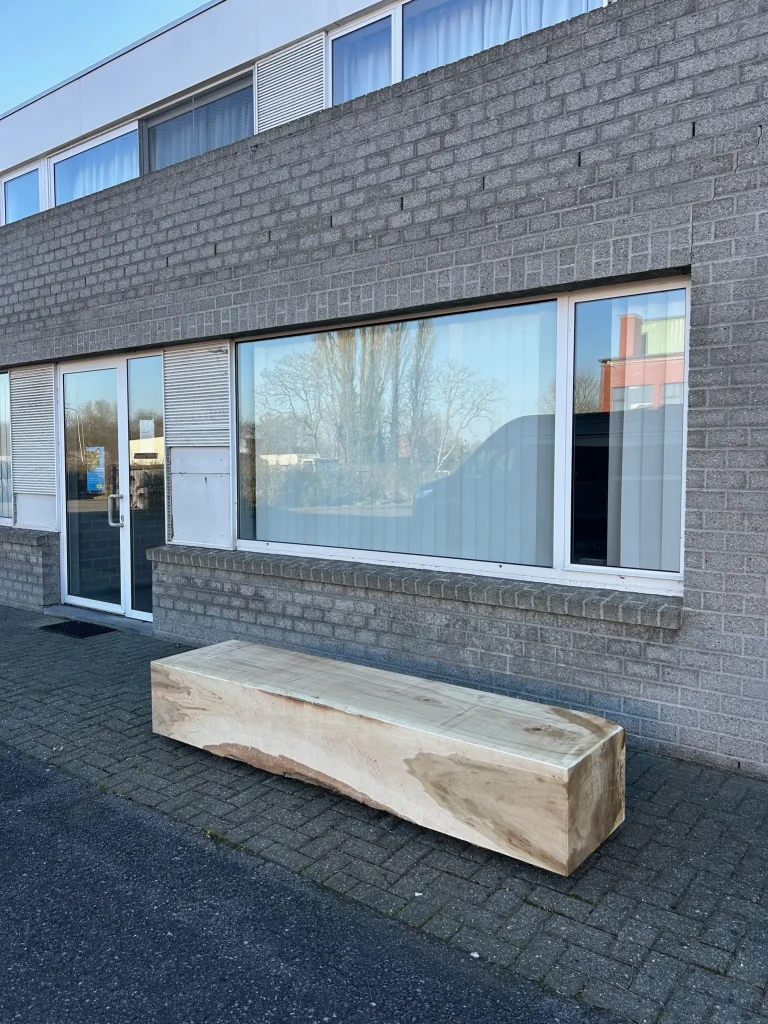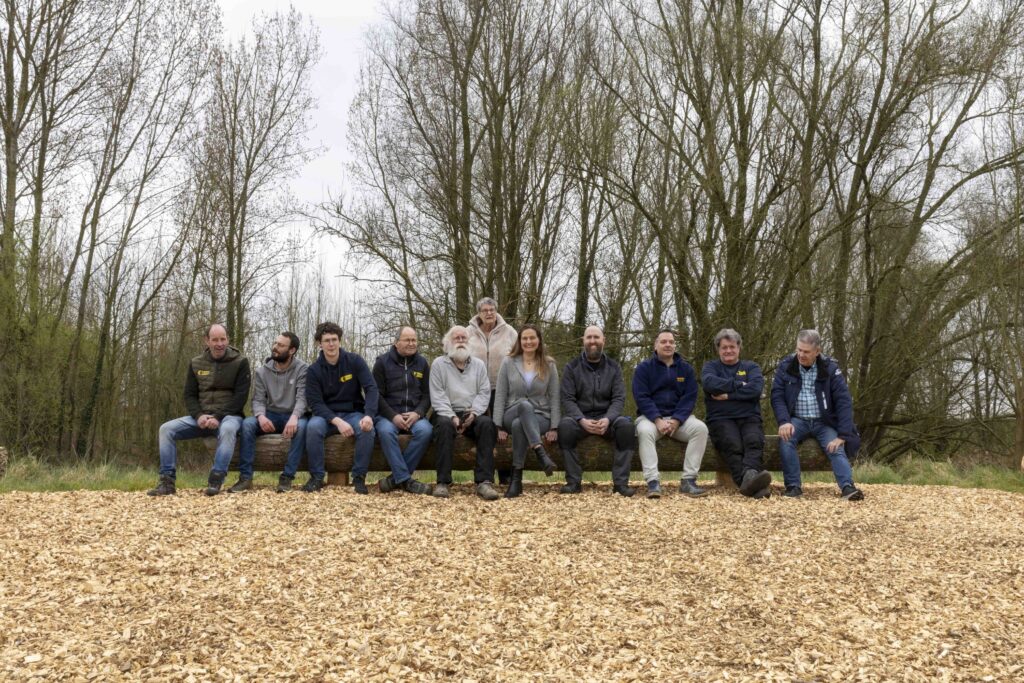Dead poplars get a second life.
On Alldrain’s company site there were a number of dead poplars. Instead of uprooting and removing them, the wood was given a new purpose in the form of benches on the site. These are the work of artist Joachim Louis who also created the artwork ‘When nature strikes back’ in Alldrain’s entrance hall.

The transformation of the poplars on the site into benches is part of the project ‘SMEs in an environment for the future’ for which Alldrain received a subsidy from the Department of Environment of the Flemish government.
With the subsidy, the Department of Environment wants to encourage small and medium-sized enterprises to unite their business activities and economic activities with measures that focus on climate adaptation, shared and multiple land use and nature restoration and promotion of biodiversity.
By transforming the wood from the dead and diseased poplars on Alldrain’s company site into benches, these three focus points from the subsidy project are addressed.
Passion for wood
For the creation of the benches, collaboration took place with wood artist Joachim Louis of Wood stories. Joachim Louis developed his passion for trees from an early age. His father was a garden and landscape architect. Joachim also followed those studies, but he sees himself primarily as an artist.
Joachim: “I am an artist with a passion for trees and the wood they can ‘produce’ thanks to sunlight. I see wood as stored solar energy.
As an artist I transform discarded trunks, fallen trees, diseased trees into art objects. By giving them a second life in this way, I continue telling the story of the tree.”
Initially the artist was asked to create a sculpture with the dying poplars on Alldrain’s site. Because this wood is not durable enough to make sculptures from, Joachim suggested after inspection to make functional art in the form of benches from the better pieces of wood when uprooting.
Promoting rest, reflection, self-care and social behavior
“The benches have a double function for me: aesthetic and also social,” Joachim explains, “They create connection between the landscape and the environment, between the environment and work environment, between the work environment and the employees and perhaps most importantly: they connect people from both inside and outside Alldrain.”

Patricia van Deurzen adds: “The farewell to the poplars is in this way not a farewell but a transition to a new form. The benches represent the enhancement of values, rest, reflection, self-care and stimulate social behavior. Because they are so beautifully shaped, there have already been many positive reactions and nice conversations with guests have arisen.”
The original idea for a sculpture in the entrance hall was also realized by Joachim. For this he used wood from a black walnut tree. See it in this short video.
Telescopic crane
To avoid damaging the storage tanks and fencing on the company site, the trees were uprooted using a telescopic crane.
The trunks that could no longer be used for sawing were placed as play and meeting elements on the adjacent site. All branches were also chipped into chips to serve as ground cover for the rest and play area.
That piece of Alldrain’s site is being transformed into a green zone that is also open for shared use with the village residents of Dentergem. The benches here provide a view of the village and the nature area.
Joachim Louis as landscape architect is responsible for the design and layout of the shared green zone.
Mobile sawmill
The good trunks were sawn on site by a mobile sawmill into beams from which the benches were then made.
There are legs made from native Robinia hardwood so that the ‘soft’ poplar wood makes no contact with the ground, and can always dry well to last several years in this way.
By making benches from the wood of the trees, a cycle has been added to the life of the trees and Patricia considers this very important: “The benches and the playful wood zone with wood chips form a source for new life. Over time, the wood attracts all kinds of bacteria and insects and fungi, mosses and herbs will grow. It becomes a feeding place for birds.”
Because the wood will retain moisture and slowly release it again, providing nutrition for new life that in turn can reduce heat stress, the wood from the poplars that would traditionally have been quickly uprooted and removed now also plays a role in the climate adaptation of the company site.

